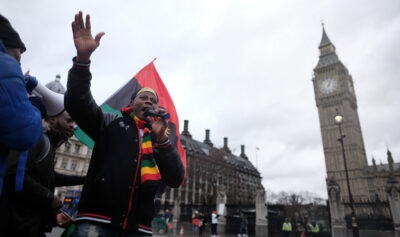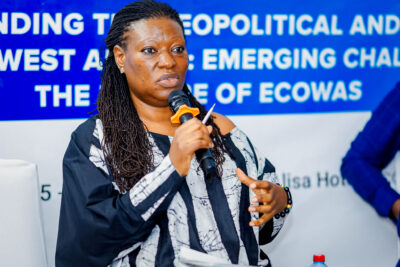Since the publication of Robert Bellah’s 1967 article “Civil Religion in America,” discussions of the topic have tended to devolve into debates between those who find the very idea morally objectionable and those who regard some form of civil religion as sociologically necessary. A Durkheimian at heart, Bellah has always taken the latter position: “Rather than simply denounce what seems in any case inevitable,” he has written, “it seems more responsible to seek within the civil religious tradition for those critical principles which undercut the ever-present danger of national self-idolization.” Yet, if there is a benign form of American civil religion in the making, it has been a long time coming. The problem is not simply the proclivity to idolize the nation or the state, but the apparent impossibility of articulating our social bonds without relegating significant segments of the population to second-class citizenship. Because the “imagined community” of a nation rarely maps neatly onto the actual citizenry of a state, the quest for unity, however minimal its basis, ironically issues in exclusions. This may make perfectly good sense from a sociological perspective, but it presents a profound challenge to liberal democratic claims about equality.
At the heart of the democratic enterprise lies a paradox: on the one hand, democracy is possible only when there is a demos—a people—and constituting a demos inevitably produces exclusions. In other words, citizenship requires that we distinguish insiders from outsiders, and the democratic struggle among citizens to be treated equally to one another is almost always, in effect, a quest to be treated differently from those outside the polity. On the other hand, there is no democratic way of distinguishing between insiders and outsiders, of determining who belongs and who does not. The question of who gets to vote, for example, cannot, on pain of circularity, be decided by a vote. In short, democracy seems both to demand and to resist closure: it necessarily requires exclusions, but no particular exclusion can be justified democratically. The result is that the moral borders of a democratic state are inherently fuzzy and contestable, always provisional and subject to being redrawn.
Historically, of course, one way of legitimating the nation and establishing collective identity has been by linking civic or political membership, on the one hand, with religious belonging, on the other. The concept of “civil religion” captures something, though not the whole, of this relation. To the extent that scholarly discussion of American civil religion has tended to focus on public rituals and the pronouncements of elected officials, on what is explicit, centralized, and produced by elites—references to God in Presidential inaugural addresses are often treated as paradigmatic of the genre—it has tended, unfortunately, to obscure the rhizomatic character of what might be termed American civic imaginaries. These imaginaries operate largely below the surface of explicit discourse and can survive, even flourish, when certain of their more visible appurtenances have been pruned away. By contrast, the more explicit forms of civil religion, though not simply epiphenomenal, are nevertheless dependent on the subterranean formations of the civic imagination: cut off from these, they quickly wither.
Religion is simply one possible dimension of collective self-understanding, and even when religion and political membership have been linked, the nature of this linkage has been differently articulated, evolving largely in response to perceived threats to the nation. Earlier understandings have tended not so much to be replaced by as sublated into newer ones. The conception of the United States as a “Christian nation,” for example—though still an influential imaginary in its own right—was reconfigured during the middle of the twentieth century into a new, more “pluralistic” narrative. On this new account, which I have described elsewhere on this blog, America was portrayed as a religious nation, in contrast to the “Godless” Soviet Union. In his 1955 book, Protestant-Catholic-Jew, Will Herberg wrote, “It may indeed be said that the primary religious affirmation of the American people, in harmony with the American Way of Life, is that religion is a ‘good thing,’ a supremely ‘good thing,’ for the individual and the community. And ‘religion’ here means not so much any particular religion, but religion as such, religion-in-general.” The construction of “religion in general”—and of the “world religions” as species of this larger genus—emerged in conjunction with the identification of “secularity” as its contrast case, and it was against the specter of “atheism” that the imagined community of “America” as a religiously plural nation came to be defined. The sometimes strident rhetoric of the “new atheists” can be interpreted in part as a contemporary response to the ongoing social exclusion of “unbelievers.”
Currently, a new, post-9/11 discourse of religion is emerging. Whereas earlier ways of linking civic and religious belonging contrasted Protestantism with Catholicism, Christianity with other religions, or “religion” with “secularity,” this new discourse distinguishes “genuine religion,” conceived quasi-pluralistically, from various ostensibly “political” phenomena said to be operating “in its name.” By means of a curious inversion of traditional Orientalist rhetoric about the excessive “religiosity” of the other (and in obvious tension with competing constructions of national identity, both Christian and secularist), movements deemed threatening to the American order are increasingly depicted as not religious enough. In this way, the potential for violence is placed outside the boundaries of “true religion,” and safely external to the civic self-understanding.
On Bellah’s account, the American civil religion is a religious tradition in its own right, distinct from and existing alongside the Protestant Christianity from which (much of) it has been “selectively derived.” Although subsequent commentators have preferred to treat civil religion as a more diffuse phenomenon, usually dropping the definitive article, they have agreed that the adjective “civil” serves usefully to delimit a particular modality or style of American religiosity. Though protean, civil religion, it seems to be assumed, can be distinguished more or less cleanly from non-civil religion—that is, from religion untainted by the politics of national identity: religious religion. But recasting the discussion in terms of the broader question of religion’s role in the construction of national identity (and vice versa) brings into view a messier picture. What is allowed to count as genuine “religion” is deeply intertwined with how Americans understand themselves collectively, and the content of civil religion sensu stricto is largely moulded to fit the shared theological and symbolic space, however cramped, in which the various socially permissible creeds overlap: hence the difficulty of bringing atheism into the fold. Even ostensibly “private” forms of religion and spirituality are implicated in the rhizomatic structure of these civic imaginaries.
Another advantage of distinguishing conceptually between civil religion and civic imaginaries is that it allows us to see that many of the claims to necessity advanced on behalf of the former properly pertain only to the latter: a house divided against itself cannot stand, but its foundation need not be religious (or anti-religious, for that matter). Even if pluralist democracies like the United States depend on unifying acts of collective imagination, there is nothing inevitable or necessary about American civil religion, and scholars would be wise to avoid taking upon ourselves the role of its apologists. Every democracy has its limits, but where they lie is a matter of perpetual political negotiation. The moral challenge posed by the democratic ideal of equal citizenship is to imagine anew, to think differently about what “we” mean when “we” talk about “ourselves” as a nation, and then to do it all over again.













In many ways, this is the conundrum I’m trying to unravel in my dissertation on theological schools with significant multi-religious student populations. Hegemony, in any prescribed context, requires that there be dominant groups and various outliers, with ongoing negotiations (explicit and otherwise) among them all. In this sense, hegemony is not necessarily detrimental, but rather descriptive of the processes of co-existence (which, hopefully, are peaceful and democratic). In the context of a relatively discreet organizational structure like an educational institution, the dominant “civil religion,” or religious imaginary, is sustained through the processes of organizational culture, which necessarily privilege certain groups and require significant disruption to accommodate (ir)religious diversity. (In most ‘liberal’ multi-religious theological schools, I suspect that these imaginaries take the form of generic “American pluralism” or “Protestant multi-denominationalism,” but we’ll see what the qualitative research reveals.) The question for me is this: how are existing hegemonic imaginaries disrupted, and new modes of religious co-existence renegotiated?
Rich, is this another way to get to your question, albeit in a different context?
While I’m not at all fond of the concept of an American “civil religion” in Bellah’s sense, I think we might find some use for the notion of a “civic culture,” whereby we come to some agreement, say, on the broader values and principles of the U.S. Constitution, or the principles enshrined in the Preamble regarding liberty, welfare and justice. Indeed, we might want to say this civic culture assumes that it is possible to come to basic agreement as to the values and purposes that constitute and follow from a commitment the idea of a “common good.”
While there may be an argument that in some measure such a culture exists, I think it best to see it as an aspiration; hence the democratic foundations of such a culture commit us to universalizing the conditions of moral and political agency (the latter including a meaningful conception of citizenship that is both both national and cosmopolitan). In other words, and for example, there would need to exist in our society a commitment to meeting the basic or primary needs of such goods as health, education and housing at the domestic level, while having a foreign policy in which the global provision of these goods is seen as part and parcel of meeting the obligations or duties of (global) distributive justice among affluent nation-states (e.g., G-8). Where such goods are lacking or provided in meager measure, the civic culture is not common but the prerogative of some classes and groups and not others and the prerequisites for the effective exercise of citizenship are missing.
And our conceptions of the Good that animate such a culture would be the product of deliberative democratic processes throughout society (such deliberation will include ‘representative’ democratic practices and procedures) as well as our educational system. It would draw upon various communities and traditions, both religious and non-religious, and would need as a condition an ideological critique of the economization of value(s) that is ubiquitous in capitalist democracies (regardless of the welfare regime-type: Liberal, Corporatist, Social Democratic).
Such a civic culture might prove capable of providing more than a contingent or haphazard connection between individual self-determination, or self-fulfillment, and the common good as exists in our society today. A “perfectionist” Liberal theory of government, intimated in some measure in Mill’s political philosophy, and articulated in George Sher’s Beyond Neutrality: Pefectionism and Politics (1997), eudaimonistic ethical theory, as elaborated by David Norton in Democracy and Moral Development: A Politics of Virtue (1995), and constitutional theories on the order of those proffered by Sotirios Barber, James Fleming, and Lawrence Sager, could be seen as providing the theoretical and moral justification for such an enterprise.